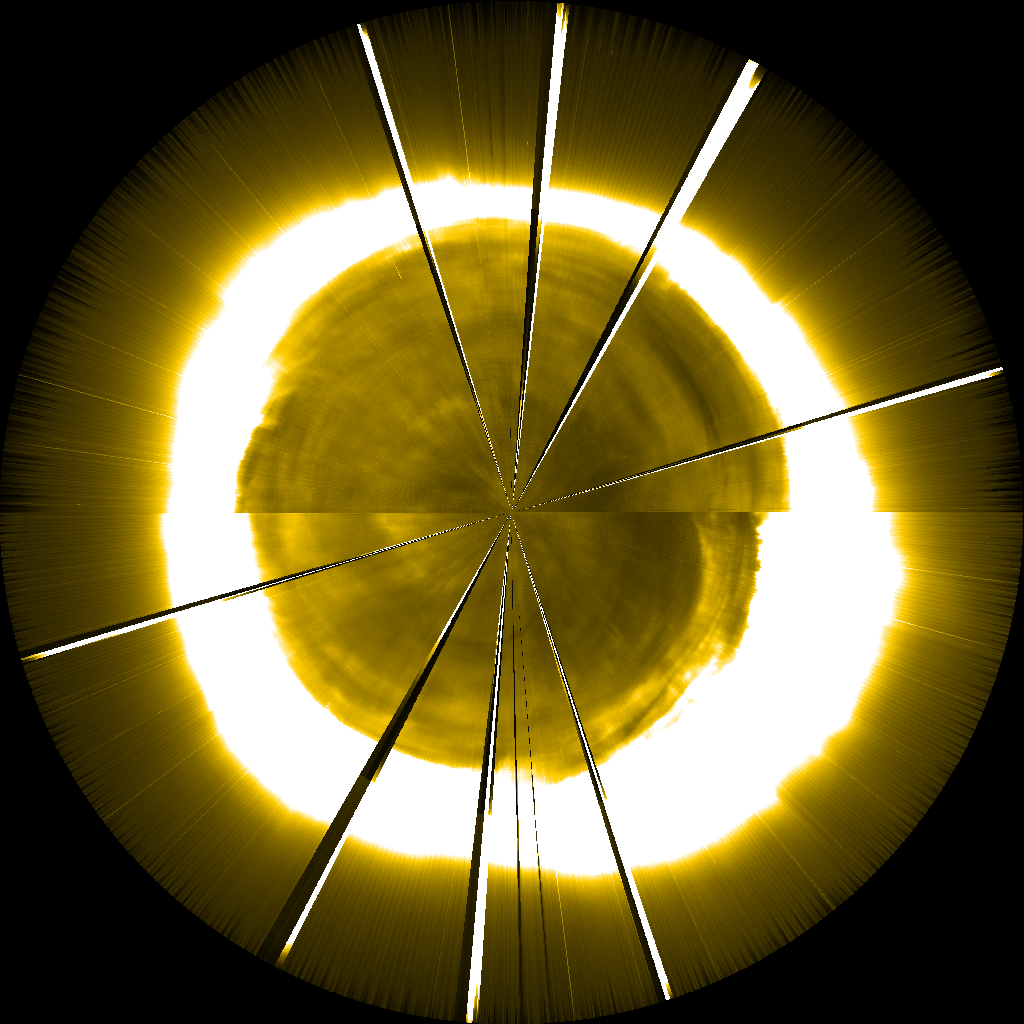The EIT instrument has proved to be indispensible for space weather monitoring, providing timely, high-quality and typically unambiguous images of solar events in near-real time. However, recent technical problems onboard SOHO have led to regular periodic interruptions in the provision of EIT data and its absence is keenly felt during such times. In addition, from a scientific point of view it is generally accepted that its 12-minute cadence is less than optimal.
SWAP provides observations centred on the 17.5 nm emission line, a bandpass which demonstrably captures a wide variety of solar features and phenomena. A single 17.5 nm image gives all necessary information on the location of: coronal holes - the source of high speed solar wind streams - active regions - potential source of solar flares - and filaments - potential eruption sites - on the frontsided, i.e., Earth-facing, solar hemisphere. Following the temporal evolution of these features as they rotate gives additional vital inputs to space weather forecasters. Additionally, SWAP’s wide field of view provides a view of the extended coronal features involved in the triggering and evolution of eruptive events that was not observed before.
SWAP continues the systematic CME watch program of the ageing EIT instrument, in a neighbour wavelength, and thus guarantees the continuing detection of space weather related solar events. Most of these significant events last on the order of 30-45 min; SWAP’s image cadence is on the order of 2 minutes, well adapted to record both the occurrence and, equally importantly, the details of these events.
Thanks to this high image cadence, SWAP is a solar monitor capable of recording the temporal evolution of every event in the low solar corona that might be a driver of space weather.
In addition to space weather monitoring, SWAP data is also used for fundamental solar physics research, as well as in joint observation campaigns with numerous other missions. The EUV imagers of the NASA STEREO/SECCHI mission have a similar spectral bandpass at 17.1 nm, making SWAP an ideal ’third eye’ of this dual-spacecraft mission.
SWAP science and operations are managed by the solar team of the Royal Observatory of Belgium (ROB), as principal investigator.
As well as the synoptic ’CME watch’ mode described above, SWAP is able to operate in a number of different modes, as described in the Instrument Guide.





